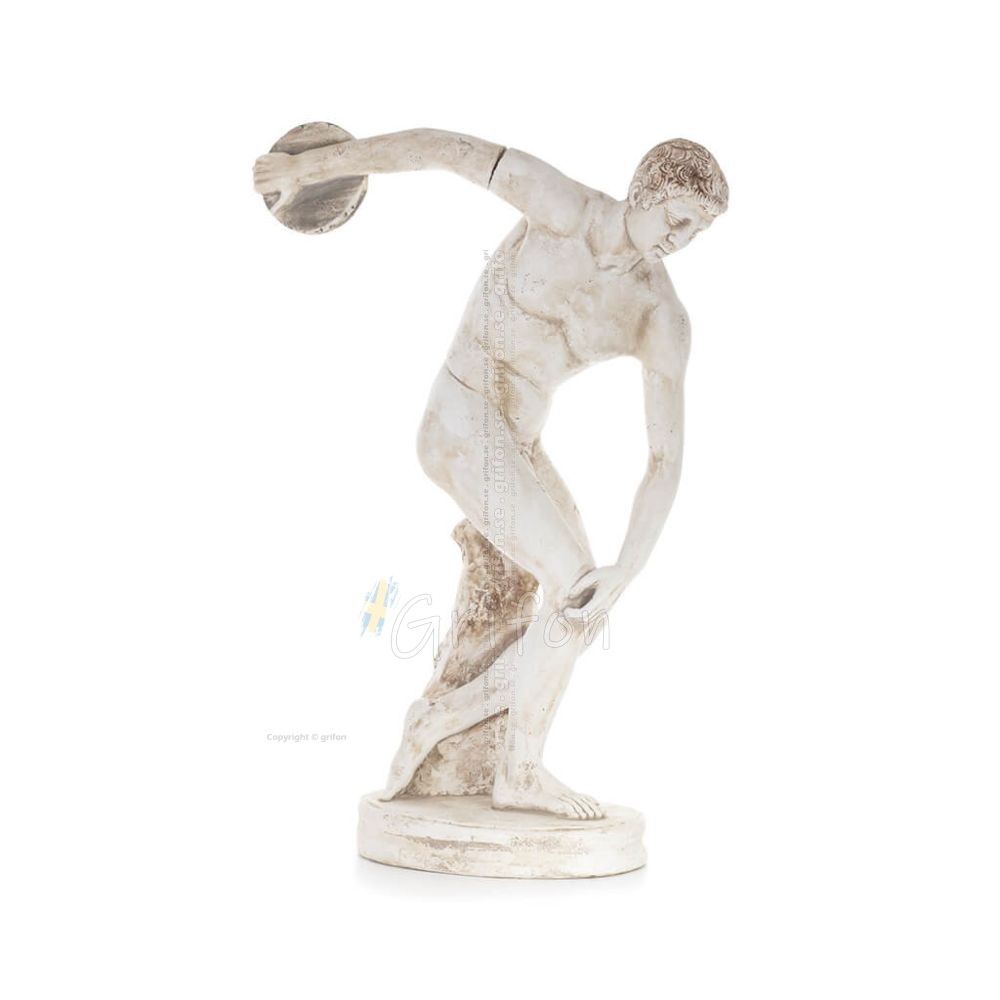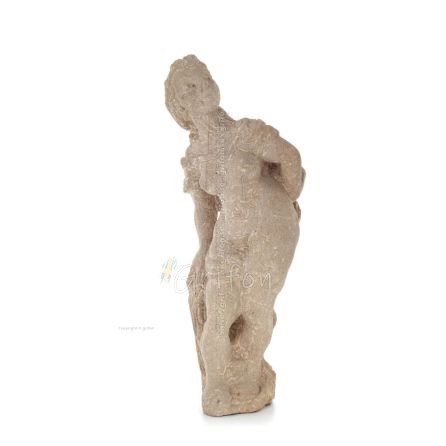405b1401
Discus Thrower of Myron: Young Athlete, Symbol of the Olympic Games, Full Length Plaster Statue, Ancient Greece
Δισκοβόλος του Μύρωνα: Νεαρός αθλητής, σύμβολο Ολυμπιακών αγώνων, Ολόσωμο άγαλμα από Γύψο, αρχαία Ελλάδα
The Discobolus of
Myron (discus thrower) is a Greek sculpture completed at the start of the Classical period at around 460–450 BC. The sculpture depicts a youthful male athlete throwing a discus. The original Greek bronze is lost but the work is known through numerous Roman copies, both full-scale ones in marble, which was cheaper than bronze, such as the first to be recovered, the Palombara Discobolus, and smaller scaled versions in bronze. The moment thus captured in the statue is an example of rhythmos, harmony and balance. Myron is often credited with being the first sculptor to master this style. Naturally, as always in Greek athletics, the Discobolus is completely nude. His pose is said to be unnatural to a human, and today considered a rather inefficient way to throw the discus. There is very little emotion shown in the discus throwers face. The other trademark of Myron embodied in this sculpture is how well the body is proportioned, the symmetria. The potential energy expressed in this sculptures tightly wound pose, expressing the moment of stasis just before the release, is an example of the advancement of Classical sculpture from Archaic. The torso shows no muscular strain, however, even though the limbs are outflung.
405b1401.01
Data sheet
- Cultures etc.
- Greek
- Brand
- Grifon Team
- Construction material
- Plaster
Specific References
- EAN13
- 5210179062074
New

























